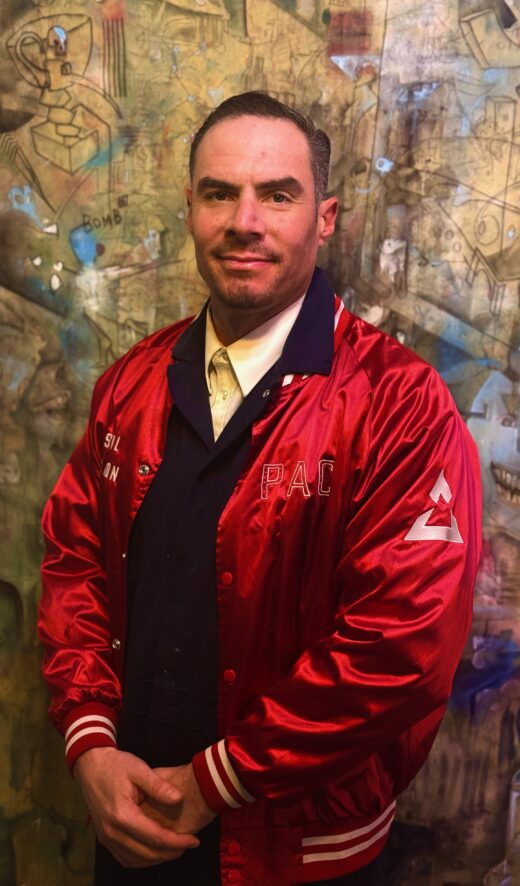The April 17 meeting of the directors of Idyllwild Water District (IWD)
included a detailed update on progress on the lower administrative
office project, a number of legacy issues uncovered by Interim General
Manager (GM) Curt Sauer and staff, and a review of board procedure and
decorum, including stipends for directors.
In public comments David Hunt wished to “commend the field workers and
Bill Rojas” for their work fixing a leak, the Friday before the meeting,
on Highway 243. Rojas is the consultant Sauer hired one day avweek to
assist in training, and Hunt also noted, with approval, Sauer’s presence
on the scene.
Hunt went on to repeat his comment from last month: He believes the
board should begin posting for a permanent GM now. He believes it is
“not a good idea to have an interim doing major changes that a permanent
GM might not agree with.” He expressed a desire for a GM with field
experience and certification for both Distribution and Treatment “higher
than our field workers.” Certifications are not required for GMs.
He also argued for a GM who wants to live in the community. Sauer
commutes from Cherry Valley, and the last GM lived in Temecula. Hunt
reminded the board that his grandfather was an IWD GM, working 33 years
for the district.
President Charles Schelly said the board would comment when it had made
a decision about the GM search process. We learned later, in response to
questions from rate-payer Steve Moulton, that Sauer had signed on for a
period of three months to one year, that he had no interest in taking
the position for the long term, and that his wife had not changed her
mind about this.
Later on, Schelly pointed out that directors cannot comment or answer
questions during public comment, but that answers often emerge during
the course of the meeting, and that members of the public with questions
may wish to remain after making their comments, to hear from the
directors.
Idyllwild Fire (IFPD) Chief Mark LaMont spoke to thank Sauer and the IWD
crew for their work, and Sauer’s “really good interface with the other
districts and the fire department.” He noted progress in hydrant repair,
in particular. Sauer later reported that of the 14 inoperable hydrants
he discovered upon taking the job, four were now working, and three more
were awaiting parts that had been ordered. LaMont said last month that
he will be working over the next 18 months to get the highest possible
Insurance Services Office rating for IFPD, and expressed his hope that
IWD’s cooperation may earn the last fraction of a point needed.
The board approved minutes from meetings for the last four months. This
is usually a routine item, but with the change in management and several
special meetings, earlier versions of the minutes were missing actions
and contained many typos and were deemed unacceptable. Taking minutes
has been the duty of the GM or chief financial officer (CFO), but at
this meeting, Office Administrator Tyla Wheeler took minutes. The Crier
notes that the minutes for Jan. 27 did not include the hiring of the
interim GM, though we have reported that the hiring was announced that
day. Schelly has said he will look into this.
On the financial report, Schelly noted he was concerned with nonpayroll
expenses at over $348,000. The largest item was repaving the district’s
Foster Lake facility, two checks totaling $112,000. Without this, the
month would be unexceptional.
The operations report contained errors that were corrected by press time
to show water loss at 14%. The losses include more water than usual for
flushing, and reflect that lost water is no longer being attributed to
IFPD use.
Sauer reported on the search for water operators. IWD advertised for
water operators and operators in training, both in the local paper,
online and in trade publications. It received 24 applicants, interviewed
12, and made job offers to two operators. Both declined because of the
distance and salary. An operator in training was hired and started work
Monday, and by Tuesday was fixing leaks. The hunt for operators will
continue, and Sauer expects another round of interviews before the end
of the month.
In response to a later public question, Sauer added that there were two
local applicants, but one had no experience or certificates, and the
other was hired by Pine Cove Water first. Sauer also said he did not
know what salary the candidates were making now. IWD does not offer the
attractive but expensive CalPERS pension plan, unlike the other local
districts.
A surveyor has created paperwork for the county to record an easement
for the well on Larry Donahoo’s property. This will be submitted at the
next supervisor’s meeting. The district also will assist Donahoo in
locating the sewer line in his yard before he undertakes a construction
project. Lack of response to Donahoo’s request was among the issues
aired in January as the board announced its decision to relieve the
previous GM of his duties.
Sauer also brought up a request for service at a 5-acre parcel across
the highway from the Blue Bird Inn. The owner wishes to divide it into
five parcels, and to have water and sewer service extended to the
parcels. Schelly said that until the Wastewater Treatment Plant (WWTP)
has been rehabilitated, no new sewer additions will be allowed. Last
year, the date of August 2024 was floated as a likely time for
groundbreaking at the plant, and the board and public will get a fuller
update from the GM on WWTP project progress at a May 1 special meeting.
Sauer notified the board that IWD is required to file a new type of lead
and copper report by October of this year. IWD was notified of this last
June. It already tests 10 houses monthly for these metals, but all
California water districts must now provide an inventory of their
distribution pipes, specifying their materials. This will either require
physical examination or a review of records. “That’s going to be quite
the undertaking,” he said. IWD will have to provide documentation that
the system is lead free, or if there are lead pipes, when they will be
replaced.
Sauer is implementing a plan to maintain the approximately 260 hydrants.
This will include a protocol for flushing them, like the one Fern Valley
Water has in place, with IFPD being notified so that it may capture that
water and reuse it. There also will be a plan to flush supply lines that
“meets industry standards.” He noted that last year IWD received 11
complaints about taste, odor or appearance from rate payers, and he
would like to reduce that number.
The GM’s report also noted two discoveries that reflect on the diligence
of former management: reapplication fees for IWD’s license from the
State Water Resource Control Board (SWRCB) and the FCC radio license.
SWRCB was revamping its system and requested new information last
summer, but the district didn’t respond, and the license expired in
December, leading to a $3,700 fee. Radio frequency licenses also expired
five years ago, leading to a $2,000 reapplication fee. Asked about these
kind of housekeeping issues by phone, Sauer gave credit to the staff,
saying these were among many things they knew about and only needed open
channels of communication to share.
IWD has just spent $14,500 on new radios and a base station that will
allow staff to communicate amongst themselves, with IFPD and the other
water districts during leaks and larger emergencies. Sauer will be
instructing staff and crew on radio etiquette.
The rehabilitation of the lower office building is well underway, with
the work about a third finished and completion three months away,
according to the contractor, GNW. Sauer showed photos of the extensive
foundation and structural work, as well as the updated electrical,
plumbing and exterior water protection. He also went through a list of
additions to the contract, including new gutters to reduce the flow of
water into the parking lot and against the foundation, discarding the
remaining parts of the heating, ventilation and air conditioning, as the
contractor could not guarantee that it is mold-free; and adding windows
to the bathrooms and break room. The project is now projected to be
about $6,000 over the original $225,000 ceiling.
The board also reviewed its own meeting decorum policy, and briefly
touched on directors’ stipends for meetings. IWD pays its directors $50
for each meeting. Pine Cove Water pays $75. IWD reduced this stipend in
the not-so-distant past from $100. Legal Counsel Ryan Guiboa pointed out
that it is district policy to compensate directors for a number of types
of meeting for which they are not currently being paid. This includes
the pre-agenda meeting where the president and GM create the agenda, ad
hoc committees meetings that the board has formally requested and
training meetings. CFO Hosny Shouman noted that there are limits on any
increase in the stipend, and that any discussion of changing policies
requires an agendized discussion item before an agendized action.
The next scheduled meeting is at 6 p.m. Wednesday, May 1 as a special
session to discuss the WWTP project.











